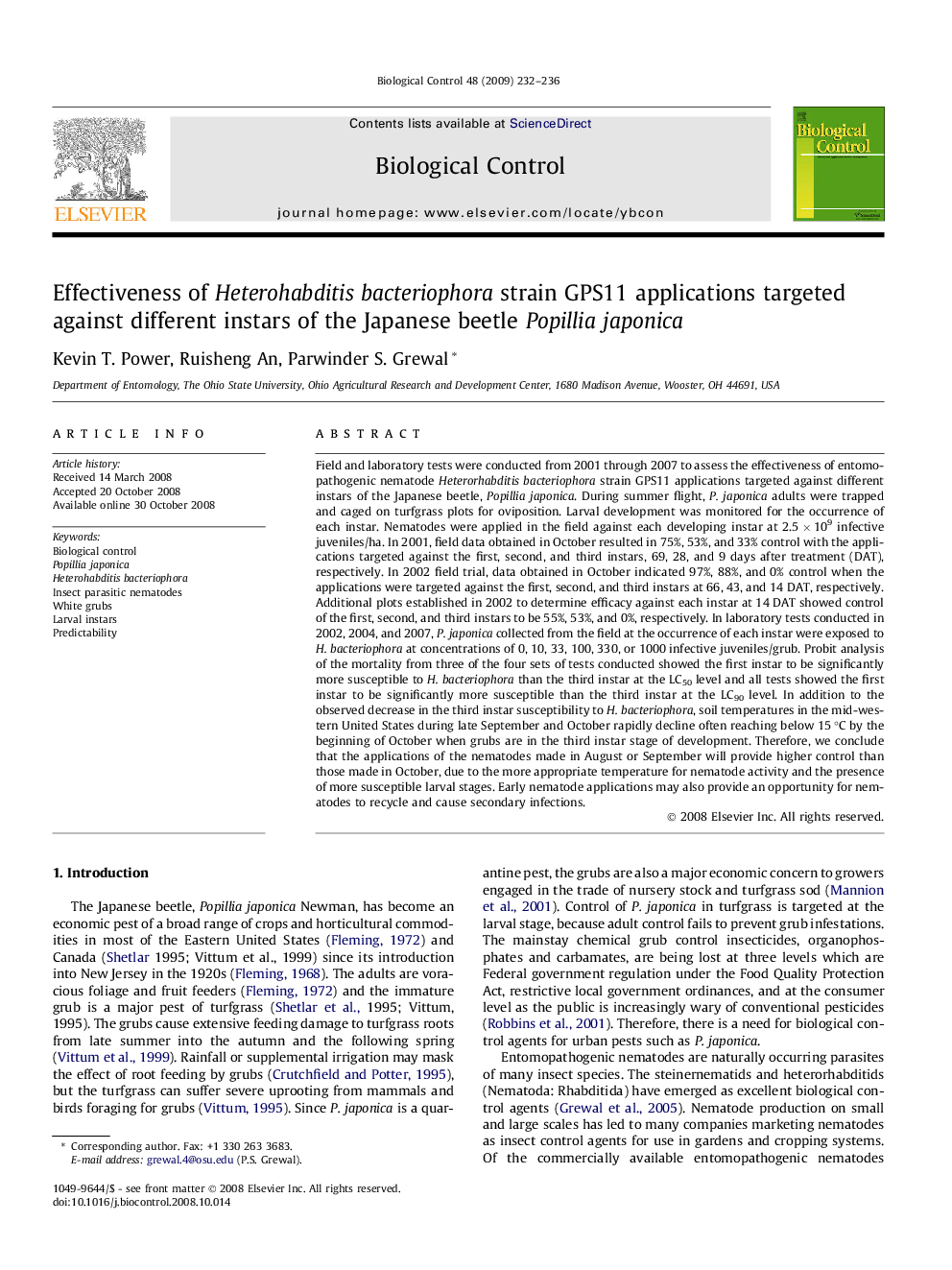| کد مقاله | کد نشریه | سال انتشار | مقاله انگلیسی | نسخه تمام متن |
|---|---|---|---|---|
| 4504744 | 1321109 | 2009 | 5 صفحه PDF | دانلود رایگان |

Field and laboratory tests were conducted from 2001 through 2007 to assess the effectiveness of entomopathogenic nematode Heterorhabditis bacteriophora strain GPS11 applications targeted against different instars of the Japanese beetle, Popillia japonica. During summer flight, P. japonica adults were trapped and caged on turfgrass plots for oviposition. Larval development was monitored for the occurrence of each instar. Nematodes were applied in the field against each developing instar at 2.5 × 109 infective juveniles/ha. In 2001, field data obtained in October resulted in 75%, 53%, and 33% control with the applications targeted against the first, second, and third instars, 69, 28, and 9 days after treatment (DAT), respectively. In 2002 field trial, data obtained in October indicated 97%, 88%, and 0% control when the applications were targeted against the first, second, and third instars at 66, 43, and 14 DAT, respectively. Additional plots established in 2002 to determine efficacy against each instar at 14 DAT showed control of the first, second, and third instars to be 55%, 53%, and 0%, respectively. In laboratory tests conducted in 2002, 2004, and 2007, P. japonica collected from the field at the occurrence of each instar were exposed to H. bacteriophora at concentrations of 0, 10, 33, 100, 330, or 1000 infective juveniles/grub. Probit analysis of the mortality from three of the four sets of tests conducted showed the first instar to be significantly more susceptible to H. bacteriophora than the third instar at the LC50 level and all tests showed the first instar to be significantly more susceptible than the third instar at the LC90 level. In addition to the observed decrease in the third instar susceptibility to H. bacteriophora, soil temperatures in the mid-western United States during late September and October rapidly decline often reaching below 15 °C by the beginning of October when grubs are in the third instar stage of development. Therefore, we conclude that the applications of the nematodes made in August or September will provide higher control than those made in October, due to the more appropriate temperature for nematode activity and the presence of more susceptible larval stages. Early nematode applications may also provide an opportunity for nematodes to recycle and cause secondary infections.
Journal: Biological Control - Volume 48, Issue 3, March 2009, Pages 232–236